Indian foreign policy already faces many challenges. These challenges have not been met and will continue to confront us in the future. An understanding of what they are will help to devise future approaches. We must therefore identify what the existing challenges are. There is a caveat. “Future” covers an indefinite time span. Are we looking at the near future, mid-term future or the long term perspective? Many exercises of identifying issues and challenges in the 20 and 30-year horizons are being done by governments and non-governmental institutions. They are useful in indicating trends. But it is impossible to predict the unpredictable.
No one could predict the collapse of the Soviet Union when it occurred though many wished for it.
The rapidity of China’s rise at the pace at which it has occurred and its impact on global affairs was not predicted with assurance.
The nature and timing of the financial crisis that has afflicted the US and its impact on its international role was not predicted by observers either, though many were warning that the US was living beyond its means.
So soon after the collapse of one superpower, the Soviet Union, we are talking about the decline of another, United States.
Many alarm bells are being rung that Chinese policies are unsustainable and that China is heading for a crisis. Many may wish that to happen so that muscle-flexing China is cut down to size and its neighbours feel more comfortable. But no one can predict with certainty what lies ahead.
The element of innovation and technology that can change global scenarios is unpredictable too. There is a line of thinking that many of the future challenges that are linked to energy and food security, for instance, could be met with technological breakthroughs. Even the success of nations in meeting a variety of challenges will be measured, it is believed, by their technological innovativeness.
The nature of conflicts may change with technological innovation, especially in cyberspace.
With all these caveats and uncertainties let me delve into the subject of this talk.
A big challenge for India is to maintain coherence and balance in its foreign policy. It is axiomatic that protecting and advancing the country’s national interest is the goal of foreign policy. This is all right as an enunciation of a general principle; the problem lies in the practical implementation of such principles.
Defining national interest is not as easy as it might seem. National polls are not conducted to define a country’s national interest. A broad consensus can be built over years on the essential parameters of such interest. But situations change and judgments have to be made. Often wrong and highly controversial ones are made. Vietnam, Iraq and unleashing Islamic fundamentalism against the Soviets are examples in the American case. India made an error of judgment, for instance, at Simla in 1972.
In reality, countries do not always act in their national interest. It is no country’s interest, for example, to have difficult relations with neighbours, but many countries do, either because they want to dominate them or are insensitive to their concerns. Smaller countries too overplay their hand and provoke their bigger and stronger neighbours.
The enlightened interest of any country is undermined by tensions and conflict. Yet, many countries willfully pursue policies that threaten peace.
If pride makes individuals obstinate and unwilling to compromise, nations too suffer from the “loss of face” syndrome.
Is the form of government relevant in properly defining what would be best in a country’s national interest? In other words, do democratic systems with public debate on policies enable leaders to form a better view of national interest, rather than dictatorial or authoritative systems where policy formulation is personalized and can be whimsical?
But we see that even the most democratic countries make huge mistakes in foreign policy choices and impose costs on themselves and others.
There is the issue of national power and national interest. A powerful country will expand the scope of its national interest in tune with its ambitions and the reach of its power. A weaker country will interpret its national interest more narrowly so as to avoid unnecessary problems.
Globalization and interdependence has also changed notions of national interest because countries know they do not have a free hand and have to give and take much more than before.
In some cases, like the European Union, national interest has been submerged in many ways within a larger community interest. Even sovereignty has been pooled in some key areas.
National interest is a fluid and uncertain concept. A big challenge for India is therefore to be able to define its national interest with discernment, realism, objectivity and foresight.
This is not easy as the backdrop against which analysis and choices are made keeps changing. A broad national consensus on what constitutes national interest is important.
I had earlier spoken of coherence and balance in foreign policy as a continuing challenge.
The international scene has changed a great deal in the last two decades or so. India has needed to adjust its foreign policy accordingly. During the Cold War India considered the Soviet Union a reliable strategic partner, even though the term strategic partner was not used then.
With a world divided into two blocs, India’s compass was nonalignment, with its political empathies more with the eastern bloc whose rhetoric was more friendly towards the third world.
India‘s relations with the western bloc were problematic because of the west’s non-proliferation injunctions, pro-Pakistani policies and economic philosophy.
The nature of our relations with US has been altered in the last few years. Our policies have become convergent in many ways. Improved relations with US has given India more room for manoeuvre regionally and internationally. Strategically, we are being pulled towards US. This means that our relations with US allies have become better too, as, for example, with Japan, South Korea and Australia.
Simultaneously, our relations with Russia have lost the centrality of the past. Even as India’s economic growth is changing its global profile, our economic ties with Russia have relatively shrunk.
Yet Russia is important for the balance of our foreign policy. A weak Russia is not good for the global system. In fact, the space vacated by Russia has been filled by China. US political lobbies still see Russia as a geopolitical threat, as Romney’s statements during the US presidential election showed.
India can do little to boost Russia, except by maintaining the regularity of summit meetings, nurturing the traditionally close defence ties that assure non-disruption of supplies at critical moments as well as access to sensitive technologies, and partnering it in political groupings such as the Russia-India-China dialogue and the BRICS where the west is absent.
The challenge for us to expand our economic ties with Russia. Energy cooperation provides an opportunity so far insufficiently exploited.
India and Russia share the agenda of multipolarity, respect for sovereignty, non-interference in the internal affairs of countries, geo-political abuse of the human rights issues, regime change policies, the proclivity to use military means to find solutions to highly complex issues.
This agenda puts India at cross purposes with many policies of the west. The challenge for India is to maintain the basics of its position but avoid a direct clash with the west over these issues.
Yet, in terms of markets, investment needs- especially to develop our poor infrastructure, access to modern technologies in health, energy, agriculture, industry, building a knowledge economy, participating in global supply chains etc, India needs are much better served by the west. Our people to people relations with the west are strong.
In fact, the needs of India’s growing economy are such that we cannot avoid doing business even with an adversary like China. Not surprisingly, China has therefore emerged as India’s biggest trade partner in goods.
The challenge for India is to successfully play on all geo-political chess boards and optimize what it can extract from others for its own development. This means India should preserve it independence of judgment and action as much as possible even as it conducts itself as a good and reliable partner where partnerships have been formed.
US rhetoric about its relationship with India being a defining one in the 21st century is heady. India-US relations have certainly achieved a degree of balance and maturity, with rapid expansion of bilateral and multilateral engagement. Contentious issues between them have receded into the background.
The US robustly affirms its strategic partnership with India, presenting India with the challenge of leveraging its new strategic ties with that country while maintaining its strategic autonomy.
It has to be borne in mind, however, that in maintaining its global supremacy, but with declining means, US needs to co-opt partners outside the Euro-Atlantic bloc, and India stands out as an obvious one because of its size, human resources, expanding economic base, reasonable military strength and democratic polity.
Even with regard to its new policy of rebalancing towards Asia, intended without being openly stated to put constraints on China’s ambitions, US sees India as a lynchpin. The assumption is that India alone is big enough in Asia to counter China and that India has concerns about China’s rise for its own security, given outstanding border differences and Chinese policies in India’s neighbourhood.
Some political elements in US find India’s ambivalence towards the west and its unwillingness to endorse western policies as the lingering malaise of nonalignment. They see India’s desire to preserve its strategic autonomy as a smokescreen for its nostalgia for nonalignment.
This is, to my mind, a misreading of reality. By strategic autonomy India means friendly ties and mutually beneficial relations with all countries, with its own legitimate- not purely selfish- interests primarily in mind.
It is in this spirit that India has strategic partnerships with a variety of countries. The idea is to develop the basis of long term relationships to mutual advantage, create trust and avoid any policy that hurts the legitimate interests of the other partner.
US has interests spread all over the world by virtue of it being a global power. It cannot expect India to support its policies everywhere. US would want to fit India in the global architecture of its policies. India has no such global architecture in which it wants to fit US. It cannot easily fit US even into the regional architecture of its policies, whether this relates to Pakistan, China’s territorial claims on India, the post Dalai Lama phase in Tibet, Iran etc.
The challenge for India’s foreign policy in the years ahead is to be courted by all and to succumb to no one. Even if India cannot lead, it must not be led.
India has, in fact, shown great resilience, despite its economic and military weakness, to try and stand on its own feet strategically in international affairs. Even big European powers, which have in the past ruled many parts of the world, do not have strategic autonomy today despite the collapse of Soviet Union and communism as an ideology. They willingly subordinate themselves to US.
By choosing strategic self-reliance India has to cope with challenges largely on its own. This requires that India avoid getting into situations it cannot handle, in the main, on its own. It does not have allies to shore up its positions.
The west has never supported India so far on issues of core concern to it, whether political, military or technological. It has now removed certain technological disabilities on India but far from fully.
The developing countries haven’t supported India either on Pakistan, China or nuclear related issues.
This explains why Indian foreign policy tends to be cautious and reticent in taking partisan positions on highly divisive issues.
There are pressures on India to be more forthright, not sit on the fence, be willing to incur costs in upholding the international order and not be a free-loader. India will have to resist such pressures in the years ahead, because many of these arise from the aggressive, dominating habits that the west has not been able to shed, which drives its efforts to shape the world according to its values which it considers universal.
India’s challenge is not to be simply co-opted into the existing international order that is controlled by the west. It must find its due place in it in its own right and be in a position to change the rules rather than simply adhere to existing ones.
The reform of international institutions is therefore very important and India’s discourse on this is legitimate. India should have a greater say in these institutions. Getting a permanent seat in the Security Council will remain a challenge as resistance to this will not go away soon.
Self-esteem and confidence are reflected in India’s claim to a permanent seat. India is not begging; it is claiming. India should pursue this quest, if only to remind that the existing international institutions that uphold the present world order are no longer representative of the international community.
We have to carefully weigh the China factor in seeking redistribution of power at the global level. The gap between India and China has grown so big that in any re-ordering of the world order China can gain more. With China’s world view, its sense of itself, its historical grievances and its territorially expansionist policies, India, which has serious differences with China, cannot be comfortable with a more powerful China within the international system.
China has become too powerful economically and financially and too integrated with the global economy to be contained in the way the Soviet Union was and the way Russia is still being pressured by the west. US pivot towards Asia is not intended to actively confront China; it is to caution it against any adventurism.
US-China relationship is much more intensive than the US-India relationship. We should not pay much attention to the democracy rhetoric. China becoming more democratic is no guarantee against a more muscled Chinese foreign policy.
US and its democratic allies have muscled foreign policies too, as they are using force in many parts of the world at great human cost. Political and moral justification for military action can always be found, with globally powerful media helping to rationalize such action.
Democracy is no insurance against the use of military means to achieve national ends.
Nationalism can be a powerful driver in foreign policy. A more democratic but nationalist China will not be any less of a problem for others.
Unfortunately, China has made it clear that it does not intend to solve the border issue with India; it says it wants it to remain dormant and leave it to the next generation to resolve it. But then, as we have seen in the latest maps on Chinese passports, China is establishing its claims in insidious ways. These actions reveal the longer-term strategy China has in mind.
It is clear Tibet is not reconciled to China’s rule. Dalai Lama’s succession can revive tensions between India and China. India has to make sure Bhutan does not yield to China’s blandishments. China’s rising profile in Sri Lanka and Nepal is a cause of concern. The China-Pakistan axis remains a grave problem.
India has to develop its economic and military muscle to counter the China threat. There is no other way. This is a big challenge for us ahead, even as engage China as others do.
India cannot risk a confrontation with China; its strategy should be to dissuade China from taking the risk of confronting India with visible and independent strategic strength.
India has to find the right balance between engaging China and hedging against it.
Some would say that a critical foreign policy challenge confronting India is the maintenance of friendly ties with its neighbours. India, it is claimed, cannot rise to its potential if it is embroiled in conflicts or tensions with its neighbours. India has supposedly failed in this regard.
Having good relations with neighbours is not a unilateral exercise; it is a reciprocal one. If India should have good relations with its neighbours, then it is equally incumbent on the neighbours to have good relations with India. No one can argue that India’s conduct alone is deficient.
India should, of course, try to do its best to win over the neighbours, but if the neighbours see it in their interest to balance a much larger India by drawing in external powers, and prevent their national identities from being overwhelmed by India’s civilisational and cultural pull by emphasing differences with India and stoking anti-Indian national sentiments, there is little India can do. This challenge will not go away.
The argument that India as the bigger country should be more generous with its neighbours is fallacious. Big countries like China and US do not believe in the merits of this approach. Vietnam and Cuba come to mind.
India’s economic growth will be of key importance for tying our neighbours economically to the Indian market. It will be important to give stakes to a cross section of people in our neighbouring countries in various sectors our economy. In this context the strengthening of SAARC should be a priority.
Our improved relations with US have excluded one external factor that in the past complicated our relations with our neighbours. China, however, remains a problem in this regard.
Pakistan remains a perennial problem. While some aspects of our relations with that country are improving, as for example, in the trade area, larger questions about the rise of Islamic radicalism there and fears that Pakistan could become a failing state are being debated.
There is little that India can do help Pakistan fight its own internal demons. India is, in fact, the reason why these demons exist in the first place. Unless Pakistan radically changes its attitude to India, ceases to whip up religious sentiments against us that feed the jihadi groups, the problem of radicalism in Pakistan cannot be successfully controlled.
India should continue to encourage more economic and people to people ties with Pakistan, but should also be clear-sighted about the serious obstacles in normalizing relations with that country.
We should shed the belief that concessions will make Pakistan more amenable.
India does not need to re-assure Pakistan about its intentions or make Pakistan trust us. The reverse is needed: it is Pakistan that needs to make the requisite effort to convince India that it has abandoned the use of terrorism as state policy.
Do we have a stake in Pakistan’s survival as a united country, or should we encourage the break-up of the country? So long as Pakistan is adversarial, we have no stakes in Pakistan’s territorial integrity. It would be ironical for India to be supportive of Pakistan’s geographical health when it wants a slice away a part of Indian territory.
We should not, however, actively seek to de-stabilize Pakistan, as managing a fragmented Pakistan would raise its own problems.
On the other hand, a broken up Pakistan loses value for the Chinese. Even a chronically unstable Pakistan loses value. It is unlikely that the Chinese will want to rescue Pakistan with economic largesse. In that context, disarray in Pakistan is not unhelpful to us.
Obversely, we cannot have a viable Central Asia and even Afghan policy if Pakistan remains unstable. If this whole region is to be integrated economically, with energy and trade connectivity, the geo-political key is in Pakistan’s hands.
US is backing the project to link Central Asia with South Asia, with TAPI symbolizing this vision, but US’s ability today to bend Pakistan to its will has suffered erosion.
Stability in Afghanistan and containment of the Taliban threat there in a regional context is another challenge that will acquire sharper contours post 2014.
The west is looking for a compromise with the Taliban, believing it can live with an Islamized Afghanistan so long as it is not anti-west. The backing the Muslim Brotherhood is receiving from the west in the Arab world would indicate that practical, realpolitik deals can be made with Islamic radicalism and rationalized. Such a scenario is not in our interest, but the means we have to forestall this are limited.
We have therefore a multifold challenge in Afghanistan, of retaining our presence and influence in that country, creating internal support for us there that can be used to counter the Taliban and the revival of radical forces there that can threaten our security directly with Pakistani support.
Lack of direct access to Afghanistan exposes the lack of a credible Indian policy towards Central Asia. We have to galvanize Iran to cooperate with us for an alternative access to Afghanistan trough Chabahar.
The Iranian nuclear issue has serious implications for India should there be recourse by the west to military action against that country. The de-stabilization of the Gulf region which will occur as a result would be very costly for India, as India has huge energy, manpower and financial interests in the region. India would have to steer clear of the rising Shia-Sunni conflict in the Muslim world.
India’s Look East policy is now facing new challenges with the erstwhile equation between China and East and Southeast Asia disturbed by China’s muscle-flexing in the South China Sea.
India has concerns about the freedom of passage through international waters, but otherwise India’s priorities concerns are in the Indian Ocean area. However, for geo-political reasons, India would need to come closer to those countries targetted by Chinese claims, though without getting directly embroiled in the territorial disputes.
In the Indian Ocean area, India should try to maintain its dominant status as a littoral state as much as possible, knowing however that at some stage Chinese presence in these waters will increase, as is portended by China’s active search for port facilities in this area.
India’s declared openness to cooperation with China on maritime issues should be based on the legitimacy of not only China’s presence in the Indian Ocean but also India’s maritime presence close to China’s shores.
India would need to give priority to its relations with Myanmar, now that the latter wants to loosen the Chinese grip over the country. Myanmar is of key importance to create east-west connectivity in this region from which India can benefit greatly. Our challenge is to implement our infrastructure projects in Myanmar without inordinate delays.
As part of our Look East policy, keeping the Chinese dimension in view and bilateral benefits that can accrue to us, India would need to boost its relations with Japan, including mobilizing Japan’s clout in the ADB to finance the east-west corridors in Asia. Our increasing strategic engagement with Japan is a welcome move.
Beyond all these challenges, there are those of energy, food security and of climate change.
The energy issue is not one of foreign policy alone, but it has a strong external dimension for us because of our huge dependence on energy imports.
Our diplomacy will need to facilitate investment in hydrocarbon fields abroad as part of our energy security drive, besides working for avoidance of conflict in areas which are our biggest source of oil and gas. We have a shared interest with US in this but US policies in the Gulf region, driven by the Israeli and Iranian factors, are not in line with our interests as they keep the area on the boil.
Energy, of course, is one area where technology can achieve such breakthroughs as can change the global energy scenario.
Climate change issues, in which energy use and environmental concerns intersect with issues of competitivity and market openings for western technologies will become a source of increasing external pressure on India in the years ahead.
The water issue in South Asia-Tibet region looms ahead. Apart from countering Pakistan’s cynical manipulation of the water issue to sustain its negative postures towards India, securing Chinese cooperation in transparent handling of the Tibetan dimension will be a challenge.
In the competition for access to natural resources, China is already far ahead of India because of greater financial resources at its disposal and its ability to organize a coordinated national effort to that end which our system does not permit.
A new Indian approach that goes beyond relying on the private sector to make economically rational decisions from their perspective would be needed, but that implies a different way of economic governance.
At the end of it all, the internal and the external cannot be compartmentalized in any country. Success or failure at home will mean success or failure abroad.
The economy is the building block of a successful foreign policy, as required resources then become available to erect defenses at home and to pursue interests abroad.
While it may not be a foreign policy issue per se, the establishment of an indigenous defence manufacturing base is vital for acting independently on the world stage. No country that cannot independently defend itself can reach big power status.
Our external dependence on arms and technology supplies limits the options available to our foreign policy.
In conclusion, it can be said that India faces unique geo-political challenges that will remain in the years ahead.
It has two strategically hostile neighbours, China and Pakistan. Both are strategic partners against India. China has transferred nuclear and missile technology to Pakistan to neutralize India strategically.
Both have claims on India territory. India is the only country of magnitude and importance in the world whose borders are contested, with a Line of Control in J&K with Pakistan and the Line of Actual Control with China. This is an unstable situation inherently whatever the agreed CBMs.
The challenge for India is to engage with both constructively and yet be prepared to confront them if necessary. India needs to avoid a two-front situation but it cannot make any undue concessions to either adversary.
India cannot expect backing from external powers on its border differences with China and Pakistan. In fact US is responsible for drawing the LOC in J&K from NJ9842 to the Karakoram Pass arbitrarily. We should demand redress and a return to legality on this issue from US.
US supports China’s territorial integrity but has not extended such support to India’s territorial integrity. We should engage US on this point as a strategic partner.
India gets better understanding on the terrorism issue it is faced with, but the west is unable and unwilling to sanction Pakistan adequately because it needs Pakistan for ensuring an orderly withdrawal from Afghanistan, besides the need to engage Pakistan as a major Islamic and nuclear-armed country.
This explains why despite the west’s willingness to use military means to combat proliferation elsewhere, Pakistan’s rapidly expanding nuclear arsenal is being countenanced, adding to threats to India’s security. The signs of revival of the agenda to limit proliferation in South Asia, excluding the Chinese factor, have to be scotched by us.
The political turmoil in the Arab world, with the Muslim Brotherhood gaining political power in many countries, is steering the Islamic world away from secularism. The growth of influence of Saudi Arabia and Qatar as well as an increasingly Islamized Turkey is not likely to encourage more liberal and modernist thinking in our neighbourhood in the mid-term.
The disturbance of the existing balance between Shias and Sunnis in our neighbourhood can have negative repercussions for us, even internally. We have to remain watchful of these developments in the years ahead.
Upgrading the military infrastructure in the north quickly and accelerating our naval strength in the Indian Ocean are challenges ahead.
The priority of priorities is to improve governance at home because the strength of our external limbs depends on the strength and depth of our roots in the ground.
Finally, if there is any truth in the dictum that more things change the more they remain the same, then it would seem that the future foreign policy challenges for India will remain the same in a different form: protection of our independence and sovereignty, friendship with all and enmity with none and a peaceful environment in which we can economically grow and meet our internal challenges.
The above is text of presentation made at the IDSA on 30th November, 2012
Published Date: 4th December 2012, Image Courtesy: southasiamonitor.org

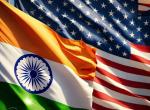
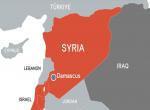
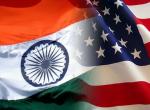

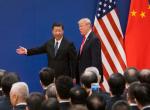
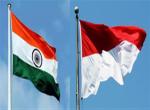


Post new comment